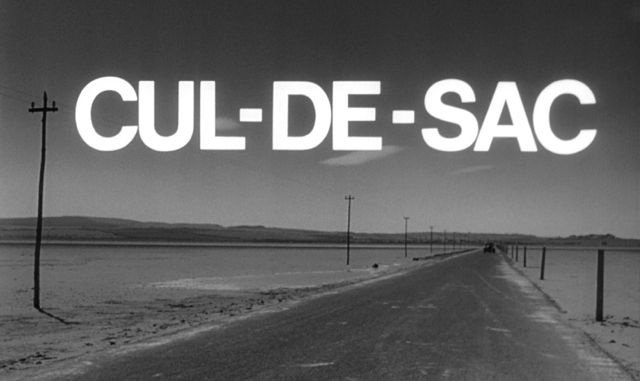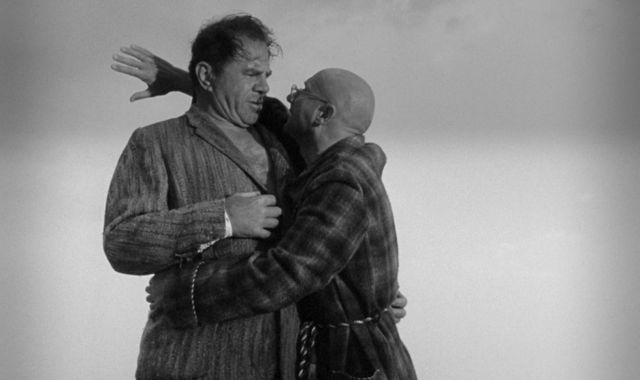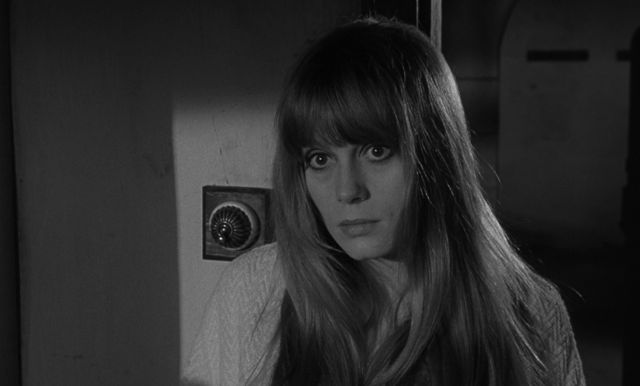
Roman Polanski's 1966 film Cul-de-sac is a slight work — its absurdist nihilism and casual misogyny add up to a fairly puerile vision of the human condition — but it's a wonderfully made film and consistently entertaining. There are hilariously eccentric performances by Lionel Stander and Donald Pleasence and by a fine supporting cast, and the film is beautifully shot in a truly strange location that itself becomes a major character in the tale.

The presence of Françoise Dorléac contributes an unintended poignancy to Cul-de-sac — she would die in an automobile accident a year after the film was released. She doesn't have much of a part — playing the fickle and vapid wife of Pleasence. She takes her clothes off on a regular basis, to remind us that she's the decisive female presence over whom and before whom Stander and Pleasence enact their preposterous duel of wills, but she doesn't seem to have much will of her own. She doesn't help drive the story — she just complicates it and decorates it.

Still, she's so luminously beautiful and fascinating that Polanski can't quite reduce her to feminine inanity — one senses a woman in her who might have given the film real depth and power if Polanski had taken her character a bit more seriously.

Pleasence's character is apparently haunted by an earlier relationship with an unseen “Agnes”, referenced glancingly here and there but whose name becomes a cry of anguish at the end, a summary of something lost long before the film began. But it's Dorléac's name one wants to speak at the end now — dead at the age of 25, leaving only a modest body of work behind her, some of it quite wonderful. What she might have accomplished in this film, had Polanski's not kept such a pyschic distance from her, becomes a symbol of all the work she might have done had she lived.
